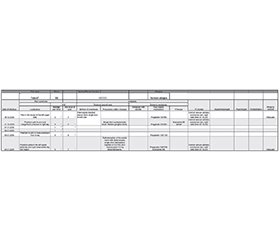Журнал «Медицина неотложных состояний» Том 21, №6, 2025
Вернуться к номеру
Менеджмент болю в українському шпиталі в умовах війни за допомогою доступного цифрового інструмента
Авторы: V.M. Suskyi (1), V. Sazhko (1), V.V. Martsiniv (1), A. Khomenko (1), A.M. Strokan (1, 2)
(1) - Feofaniya Clinical Hospital, Kyiv, Ukraine
(2) - Shupyk National Healthcare University of Ukraine, Kyiv, Ukraine
Рубрики: Медицина неотложных состояний
Разделы: Справочник специалиста
Версия для печати
Ведення гострого болю в умовах війни й обмежених ресурсів є складним клінічним викликом. У цій статті описано досвід української лікарні, де було впроваджено просту систему моніторингу болю на базі Google Sheets. Цей підхід дав змогу фіксувати рівень болю, аналгезію та зміни в стані пацієнтів у режимі реального часу, забезпечуючи ефективну комунікацію між черговими змінами. Використання Google Sheets не потребує додаткових витрат і може бути адаптоване до інших кризових ситуацій, зокрема стихійних лих або економічної нестабільності, коли відсутні складні медичні інформаційні системи.
Handling acute pain in the middle of a war is extremely challenging, especially when you don’t have enough resources. This article describes the use of Google Sheets as a simple, accessible system for recording and managing pain at a Ukrainian hospital during wartime. The approach offers a low-cost and flexible tool to help healthcare providers monitor pain scores, pain relief interventions and patient progress in medical care. This method isn’t restricted to war zones or particular healthcare systems.
менеджмент болю; Google Sheets; обмежені ресурси; гострий біль; військова медицина
pain management; Google Sheets; resource-limited settings; acute pain; wartime medicine
Introduction
Materials and methods
Review and discussion
Conclusions
- Smith J, Kumar A. Innovative data recording methods in resource-limited healthcare settings: a review. J Glob Health Innov. 2020;15:125-133.
- World Health Organization. Guidelines on the management of chronic pain in adults. 2018. Available from: https://www.who.int/.
- International Association for the Study of Pain (IASP). IASP guidelines for the management of pain in low-resource settings. IASP Reports. 2021. Available from: https://www.iasp-pain.org/.
- Johnson P, Lee R. Preventing opioid misuse in post-conflict societies: a framework for healthcare providers. J Pain Addict Prev. 2019;12:255-267.
- Brown CH, Miller TE. The role of regional anaesthesia in trauma and acute pain management. Anesth Analg. 2017;125:579-589.
- Patel M, Graham A. The role of structured documentation in improving outcomes in acute pain management: a systematic review. Pain Med. 2018;19:30-40.
- Feofaniya Clinical Hospital. Systemic pain management protocol for acute and chronic pain following combat trauma. Internal document, Feofaniya Clinical Hospital, Ukraine. 2024.
- American Society of Regional Anaesthesia and Pain Medicine. Guidelines for the use of regional anaesthesia in acute pain management. Reg Anesth Pain Med. 2018;43:567-576.
- Gajraj RJ. Practical opioid-sparing strategies in acute pain management: focus on regional anaesthesia. Anesthesiol Clin. 2017;35:341-355.


/85.jpg)